Transpiration is loss of water from a plant. Transpiration mostly occurs from the leaves. Water vapour diffuses out of the stomata ( tiny pores mostly found on leaves ).
Loss of water from the leaves creates a pull on the water in the xylem cells drawing water up the plant. This movement of water from roots to leaves is called the transpiration stream.
Xylem cells form a continuous tube from the leaves of a plant to the roots, a bit like a drinking straw providing a continuous flow of water.
The transpiration stream transports minerals and water around the plant and keeps cells turgid ( full of water ) so they can support the plant without it wilting.
Rate of Transpiration Experiment
How does increasing temperature and air flow around a plant affect the rate of transpiration?
This simple investigation uses a hairdryer to increase the air flow and temperature around the leaves of a stick of celery to find out how the rate of transpiration is affected.
You’ll need
Two celery stalks with leaves
Food colouring
Water
A hairdryer
Ruler
Instructions
Choose two stalks of celery with leaves that are similar in size.
Cut them to the same length.
Place each stalk in a container of water and food colouring. Make sure the same amount of water and food colouring is used for each sample.
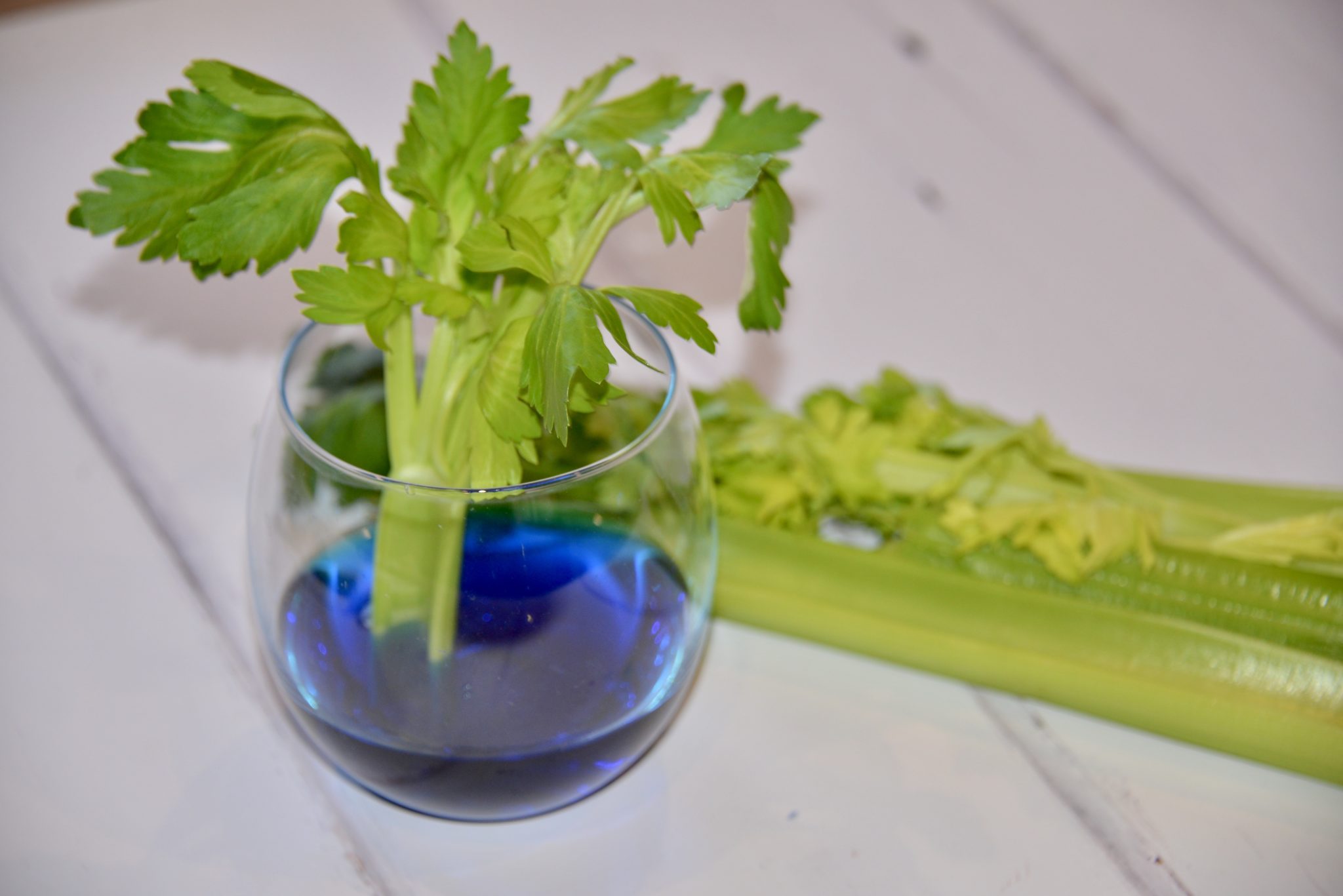
Every 5 minutes for half an hour blow warm air from a hairdryer over the leaves of one celery stalk.
After half an hour, remove the celery stalks from the water and carefully slice the stalks to find how far up the coloured water has reached.
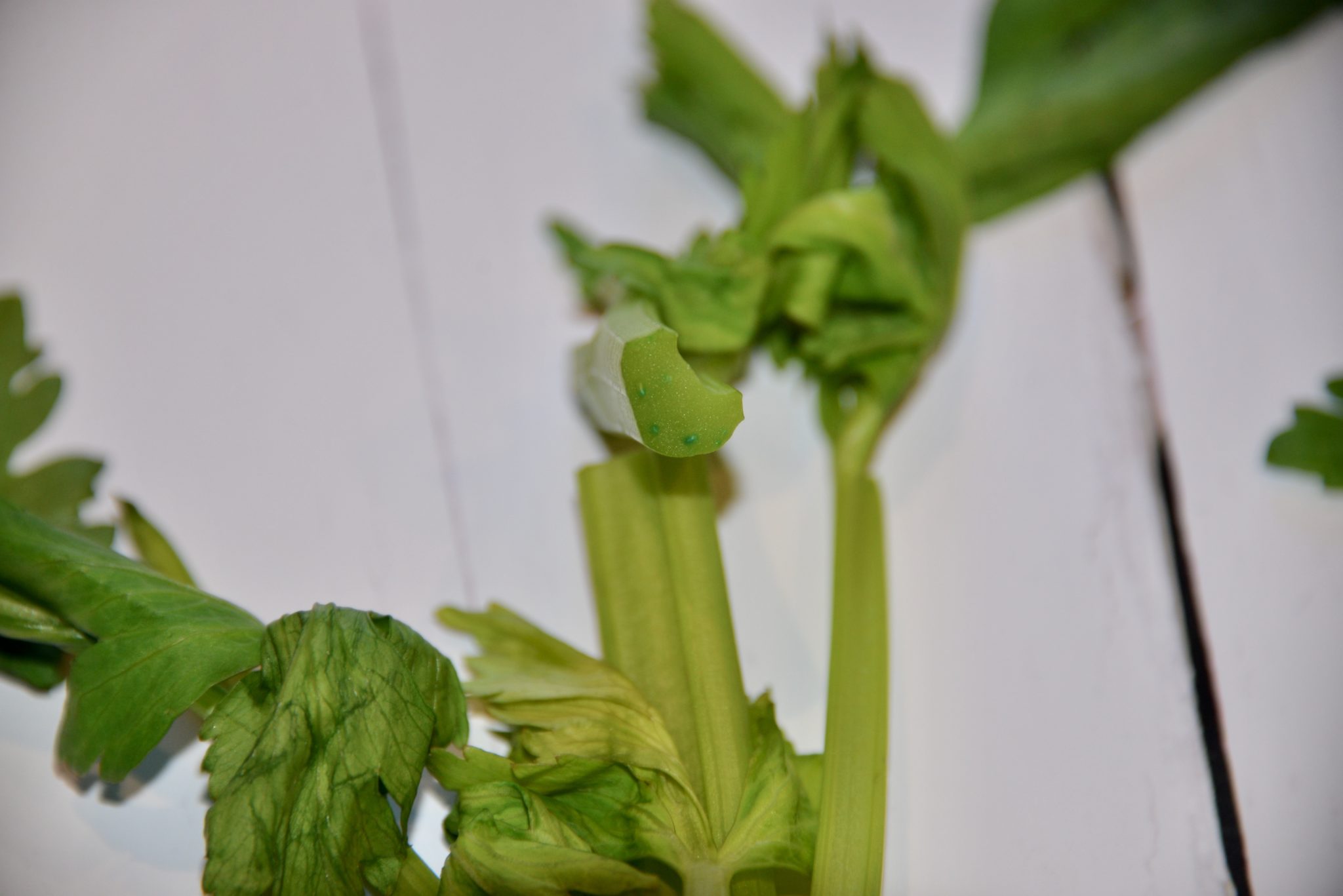
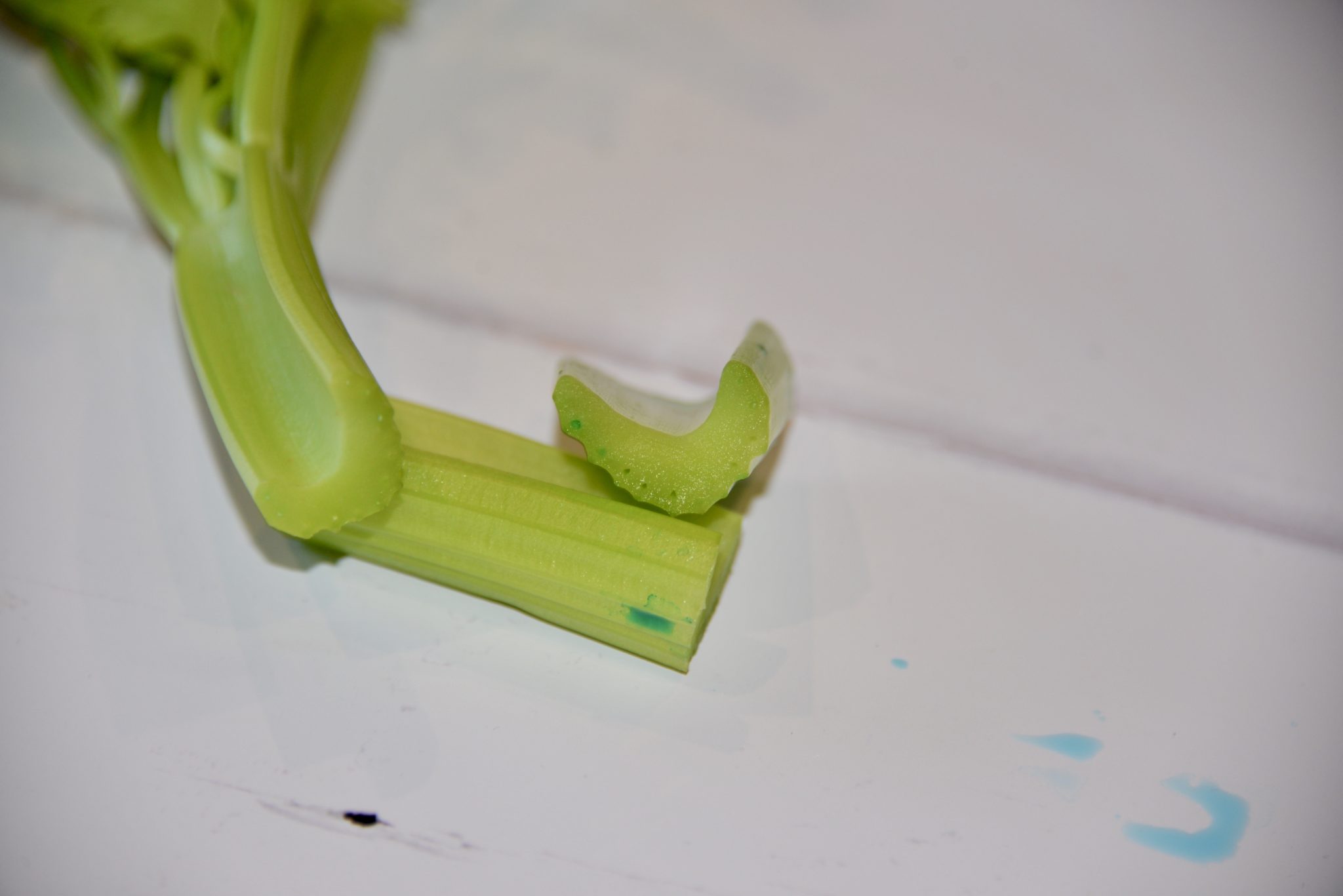
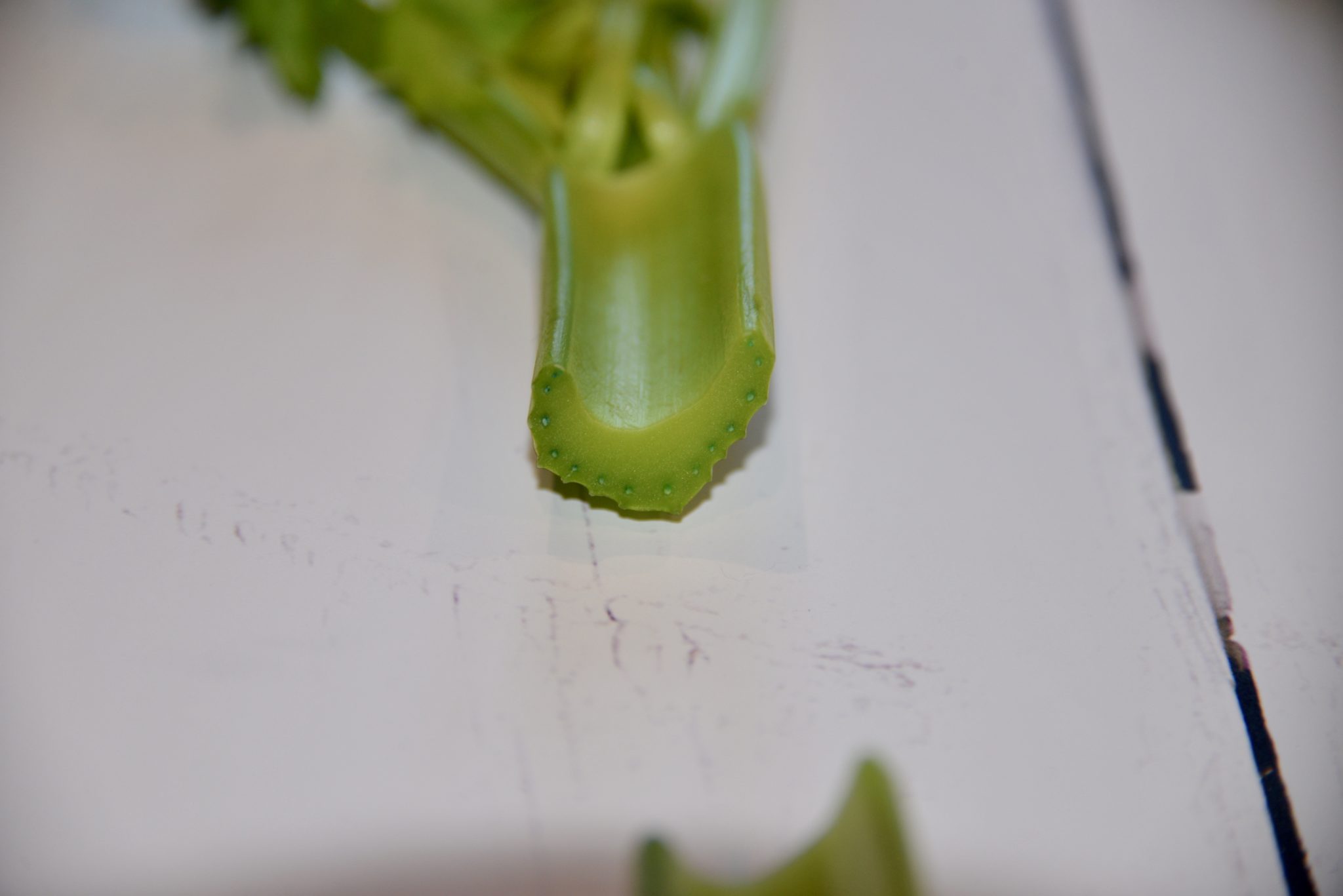
How does increasing air flow and temperature affect the rate of transpiration
We found the celery sample that was exposed to heat from the hairdryer had a much faster rate of transpiration than the celery not exposed to heat.
The coloured water had travelled much further up the stalk of the sample exposed to heat than the one not.
How movement of air affects transpiration
Air flow removes water vapour from the around around a leaf creating a concentration gradient ( low concentration of water in the air and high concentration in the leaf ) between the leaf and air which increases water loss from the leaf. If there’s not much air flow the water vapour doesn’t move far from the leaf so there’s a high concentration of water inside and outside of the leaf and so no concentration gradient for diffusion.
How temperature affects transpiration
Higher temperatures mean water molecules evaporate at a faster rate which increases the rate of transpiration.
What else affects the rate of transpiration
The amount of light also affects transpiration rate. Stomata close in the dark so water cannot diffuse out.
More experiments to investigate transpiration
These colourful flowers look much more impressive than the celery, but the process is the same!

Water is transported up the stem of a plant by a process called capillary action. You can try this out by placing paper flowers into a tray of water and watching them open up.
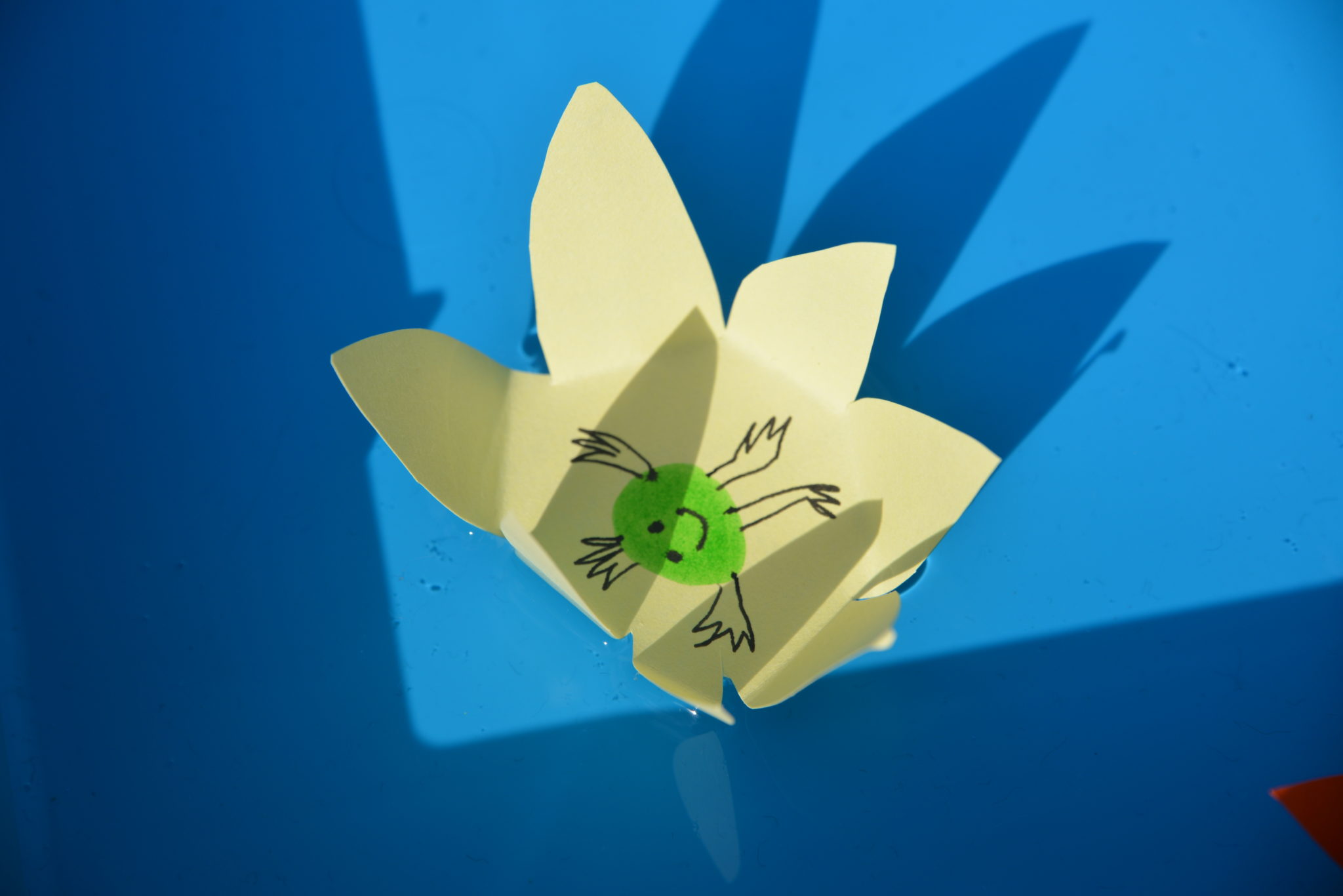
You might also like my 3D model of a flower! This is great for learning about the different parts of a flower.
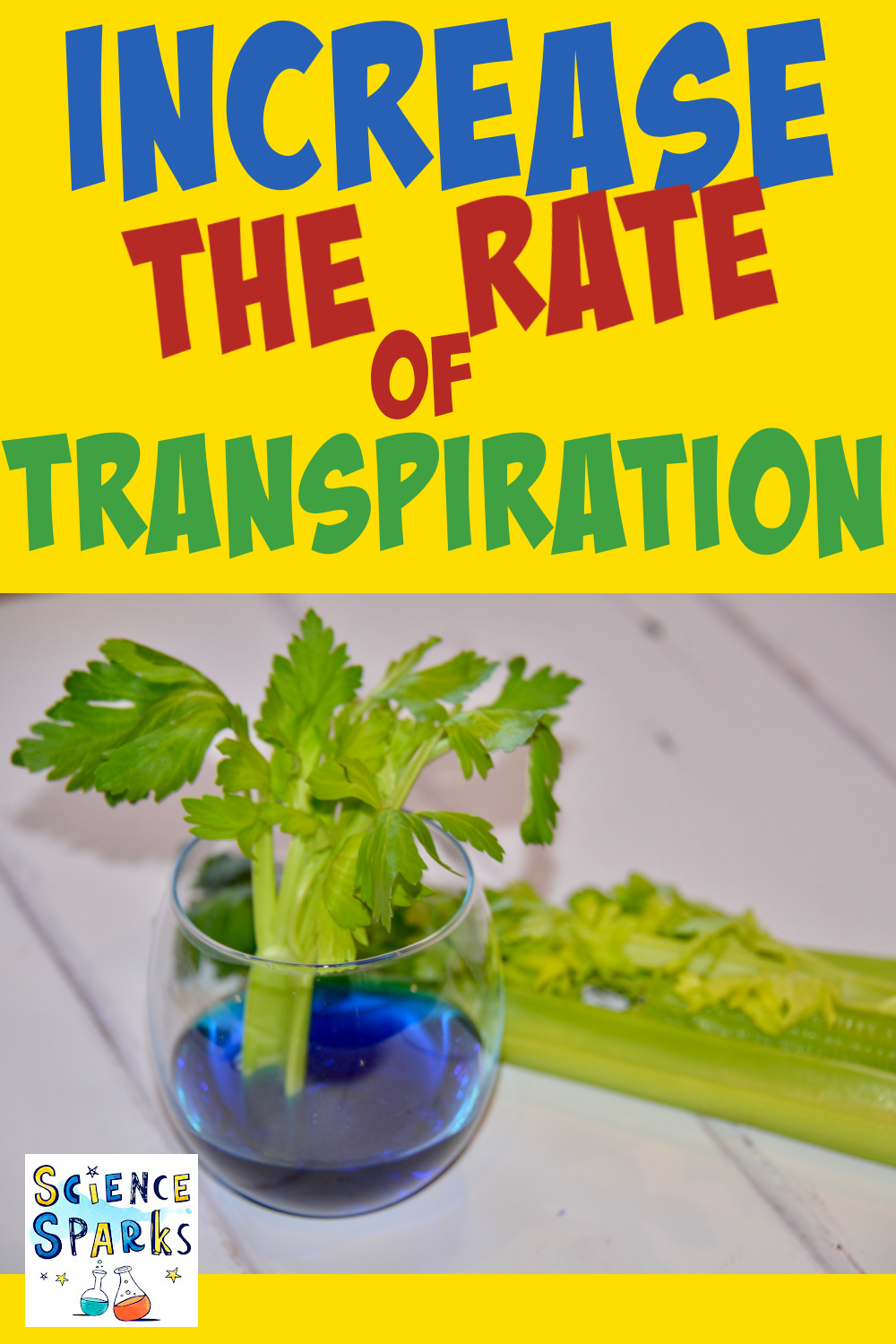
The post Investigating the effect of increasing temperatures on transpiration appeared first on Science Experiments for Kids.



